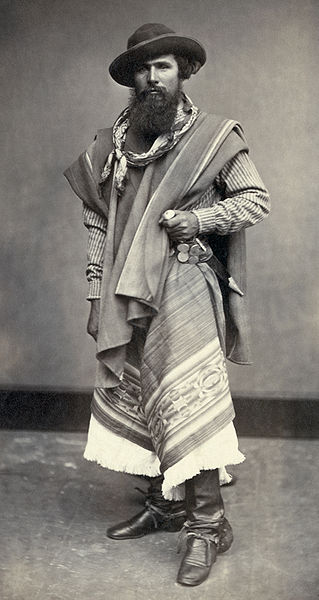Economic history of Argentina
The economic history of Argentina is one of the most studied, owing to the "Argentine paradox". As a country, it had achieved advanced development in the early 20th century but experienced a reversal relative to other developed economies, which inspired an enormous wealth of literature and diverse analysis on the causes of this relative decline. Since independence from Spain in 1816, the country has defaulted on its debt nine times. Inflation has often risen to the double digits, even as high as 5,000%, resulting in several large currency devaluations.
An 1868 photo of a gaucho. Gauchos helped livestock ranching extend through much of Argentina.
Field wagons ("carretas") were introduced by the Spaniards at the end of the 16th century as transport for passengers and goods.
Lassoing cattle in the pampas, 1794 lithography by Fernando Brambilla.
Buenos Aires marketplace, 1810s
National Reorganization Process
The National Reorganization Process was the military dictatorship that ruled Argentina from 1976 to 1983, which received support from the United States until 1982. In Argentina it is often known simply as the última junta militar, última dictadura militar or última dictadura cívico-militar, because there have been several in the country's history and no others since it ended.
Videla met with U.S. President Jimmy Carter at the White House on 9 September 1977.
Viola met with Ronald Reagan and Argentine Ambassador Jorge A. Aja Espil at the White House on March 17, 1981.
Argentines commemorate victims of military dictatorship, 24 March 2017
Image: Retrato Oficial Jorge Rafael Videla 1976








